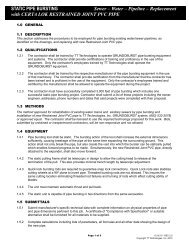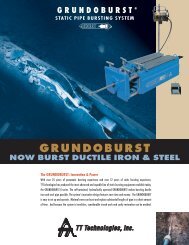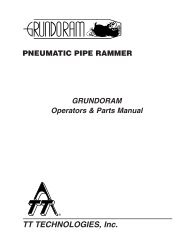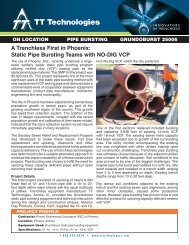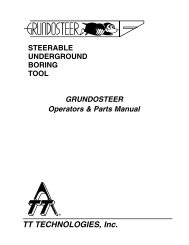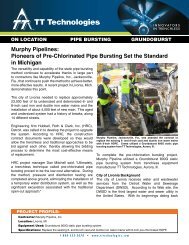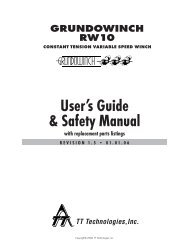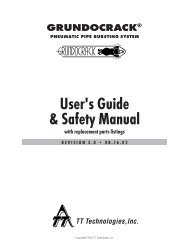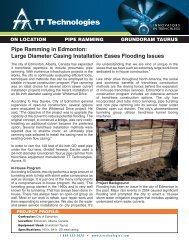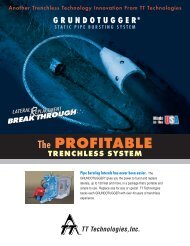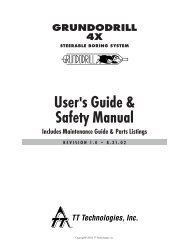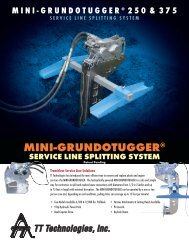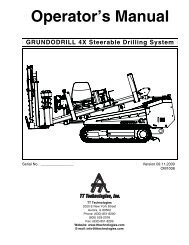Pneumatic Guide to Pipe Bursting - TT Technologies Inc.
Pneumatic Guide to Pipe Bursting - TT Technologies Inc.
Pneumatic Guide to Pipe Bursting - TT Technologies Inc.
You also want an ePaper? Increase the reach of your titles
YUMPU automatically turns print PDFs into web optimized ePapers that Google loves.
Host <strong>Pipe</strong> Materials<br />
1. Concrete, Reinforced Concrete—Good bursting<br />
potential. Steel welded wire mesh and thickly encased<br />
pipes may cause concern and may require special<br />
guide head design.<br />
2. Clay—Good bursting potential. <strong>Pipe</strong>s with PVC<br />
joints need special applications <strong>to</strong>ols.<br />
3. Cast Iron—Good bursting potential. Special<br />
applications <strong>to</strong>ols and protection of the winch cable<br />
must be considered.<br />
4. PVC, ABS Plastic—Some bursting potential.<br />
Special cutting blades are necessary, length of runs<br />
may be reduced.<br />
5. Transite—Good bursting potential.<br />
6. Asbes<strong>to</strong>s - Cement <strong>Pipe</strong>—Good bursting potential.<br />
7. Truss pipe - a combination of plastic with a<br />
concrete honeycomb reinforcement. Good bursting<br />
potential.<br />
Host <strong>Pipe</strong> Depth and Profile<br />
1. May effect both winch & pneumatic <strong>to</strong>ol selection.<br />
2. May effect length of entrance & exit pit requirements.<br />
GRUNDOWINCH<br />
3. Special cutting attachments for repair joints, if<br />
present.<br />
4. May effect length of possible bursting runs - larger<br />
diameter pipe may require shorter burst lengths.<br />
8



